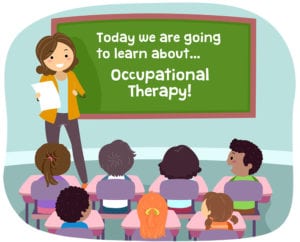What is ADHD?
Attention-deficit/hyperactivity disorder (ADHD) is a disorder that is characterized by difficulty paying attention, impulsivity, disorganization, and hyperactivity. Symptoms typically begin during childhood and can impact a person through adulthood.
What are Possible Signs of ADHD?
- Has difficulty sustaining attention
- Seems to not listen when spoken to directly
- Starts tasks but quickly loses focus and is easily distracted
- Difficulty with organizing tasks and activities (e.g., keeping school work organized, time management, or meeting deadlines)
- Avoids or dislikes tasks that require sustained attention, such as homework
- Become easily distracted by unrelated thoughts
- Forgetful in daily activities, such as chores
- Fidgety while seated
- Being unable to play or engage in hobbies quietly
- Being constantly in motion or “on the go”
- Excessive talking
- Blurting out an answer before a question has been completed, finishing others’ sentences or speaking without waiting for a turn in conversation
- Having difficulty waiting his or her turn
An occupational therapist (OT) can help to identify signs that a child may have ADHD, but a formal evaluation and diagnosis needs to be provided by a developmental pediatrician or psychologist.
Ways Occupational Therapy Can Help
Occupational Therapy can be very beneficial for children with ADHD in helping them become successful and more independent across all environments. Occupational therapists can assist in helping your child:
- Improving executive functioning skills such as attention, planning, memory, and organization
- Creating strategies and adaptations for the executive functioning skills. For example, an occupational therapist can help your child break down tasks into manageable steps. An OT can also help your child utilize organizational strategies at school and at home such as creating lists or schedules
- Developing a sensory diet which will provide your child with activities that provide the sensory input needed to help calm his/her body so they can better focus and attend. For example, and OT may have your child complete heavy work activities or yoga poses before a seated task to help them stay more organized and calm.
- Utilizing self-regulation strategies such as deep breathing to help decrease hyperactivity and improve attention to tasks
- Adapting the environment to eliminate distractions to improve focus. For example, decluttering or having them sit in the front row in class so they are less visually distracted
Occupational therapists can help children with ADHD to build these skills, among others, through a range of therapeutic strategies. Having your child receive occupational therapy can help your child be successful at school, home, and within the community.
Contact Chicago Occupational Therapy or call (773) 980-0300 to learn more about our services and how we can help your child flourish and grow.


